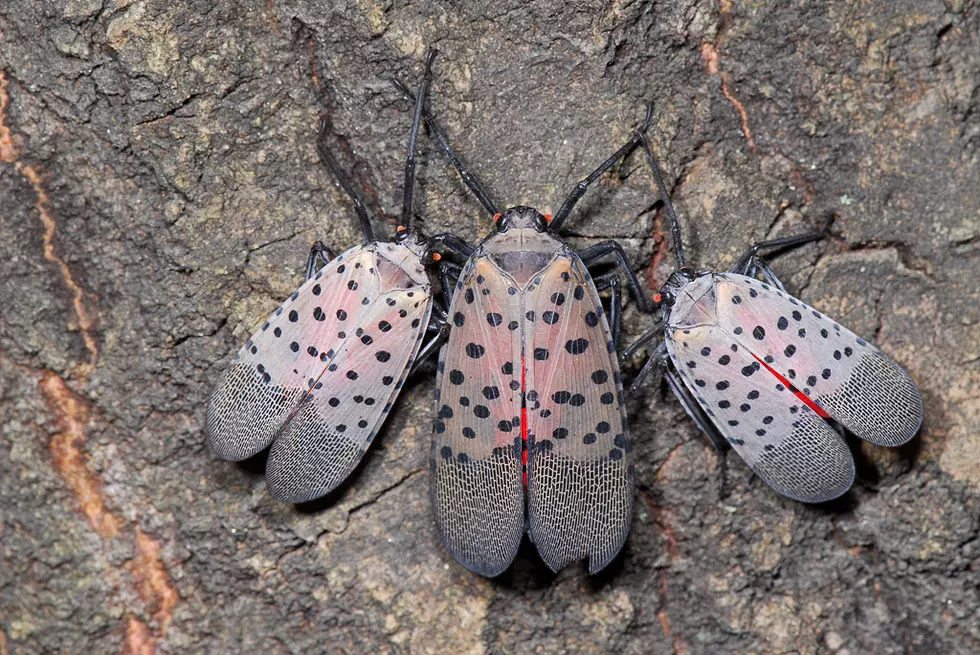
Kill them all! Spotted lanternfly quarantine extends to 8 NJ counties
Residents and businesses in eight New Jersey counties are now being told to be on the lookout for the spotted lanternfly, an invasive species that'll be laying its eggs in the weeks ahead to increase its presence even more throughout the Garden State.
Excellent hitchhikers and a danger to crops and hardwood trees, the insect from Asia that was first spotted in New Jersey last year has been detected in parts of Burlington, Camden, Gloucester, Hunterdon, Mercer, Salem, Somerset and Warren counties.
With these counties in the New Jersey "quarantine zone," determined by the state Department of Agriculture, people and businesses are urged to inspect their vehicles for spotted lanternflies that may have latched on, as well as outdoor items such as firewood, paving stones and lawn equipment for egg masses, before moving any of these items outside the quarantine area.
"It's going to take everyone's help to control this insect," said Joe Zoltowski, director of the Department's Division of Plant Industry.
The destructive insect makes use of over 70 different plant species, including fruit trees, ornamental trees, vegetables, herbs and vines, according to the Department. When feeding on the sap, they excrete a sugary substance that promotes growth of a sooty mold, which can weaken and kill plants or trees over time.
Zoltowski said the Department has survey crews dispatched in affected counties. Treatment efforts are occurring in spots where crews also find Tree of Heaven, the main host for spotted lanternflies.
The sap-sucking insect has had almost no impact on agriculture in New Jersey as of now, the Department said. The species is not a threat to humans or pets.
Anne Nielsen, associate professor of entomology at Rutgers, said the insect has been found in and around commercial vineyards in New Jersey. Experts are keeping an eye on this situation, as spotted lanternflies have caused vine damage and death in Pennsylvania since they were first spotted there in 2014.
"The populations are spreading and they're higher this year as they reproduce," Nielsen said, noting invasive species have no natural enemies that can regulate their population.
Nielsen believes grapevines are the most at risk of damage, in terms of agriculture — New Jersey has dozens of vineyards as the wine-growing industry explodes.
Kill them, if possible
There's no mercy granted for these pests, which do not belong here in the first place.
"If someone does see one, we ask they kill it if possible," a Department of Agriculture spokesman said.
The Department would also like the location reported to slf-plantindustry@ag.nj.gov.
Anyone who sees egg masses, which tend to look splotches of mud, are asked to scrape them off, double bag them, and throw them away. Eggs can be placed in bleach, alcohol or hand sanitizer to be destroyed.
Those who know of a spotted lanternfly site but can't take a specimen or photograph are asked to call the statewide hotline at 1-833-223-2840.
"Based off what we've seen in previous years, we should start seeing eggs in October, but we're still learning a lot about this insect," Nielsen said.
Eggs typically hatch in April or May, and the nymphs reach adult stage in July, when they're most conspicuous, she said.
More from New Jersey 101.5:
Contact reporter Dino Flammia at dino.flammia@townsquaremedia.com.
More From New Jersey 101.5 FM









